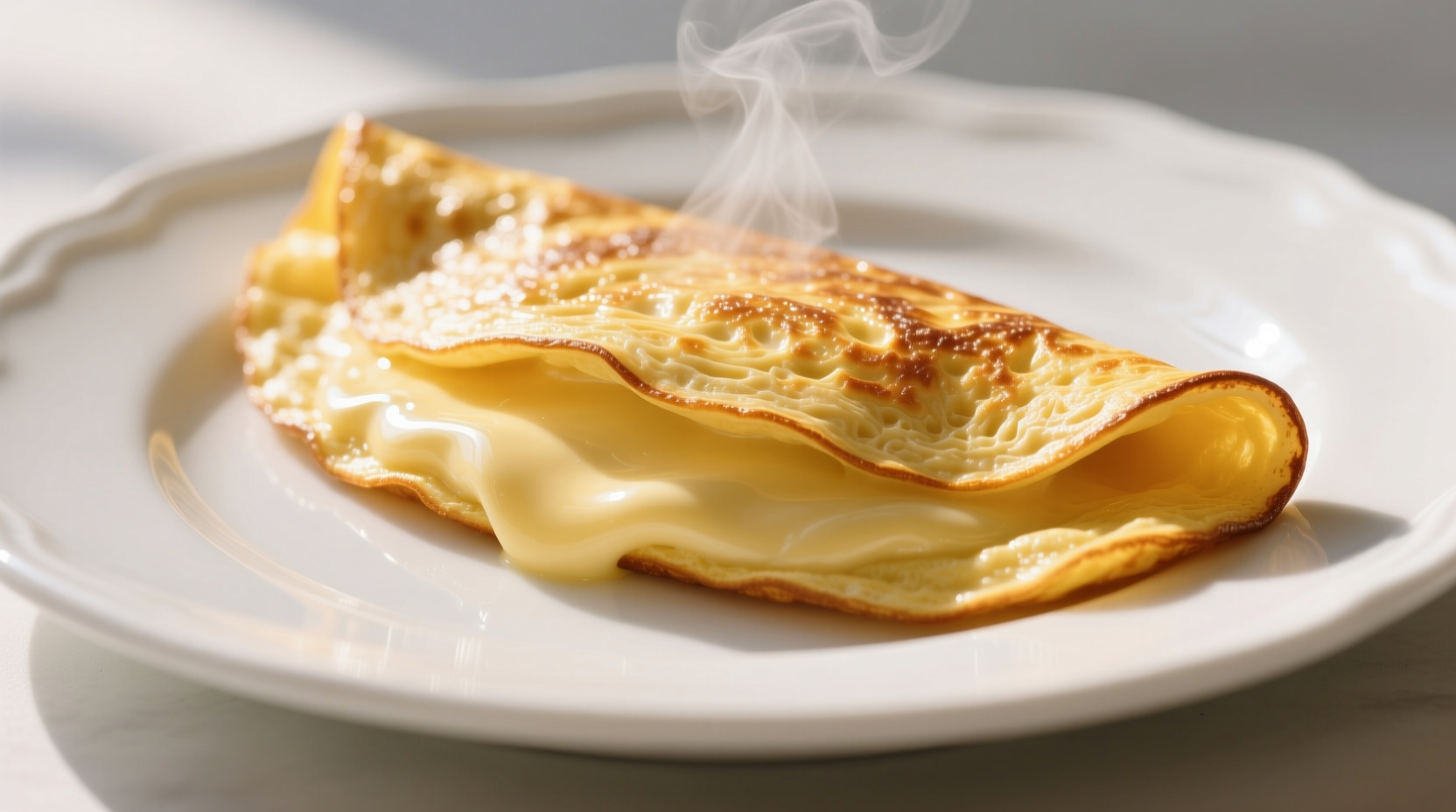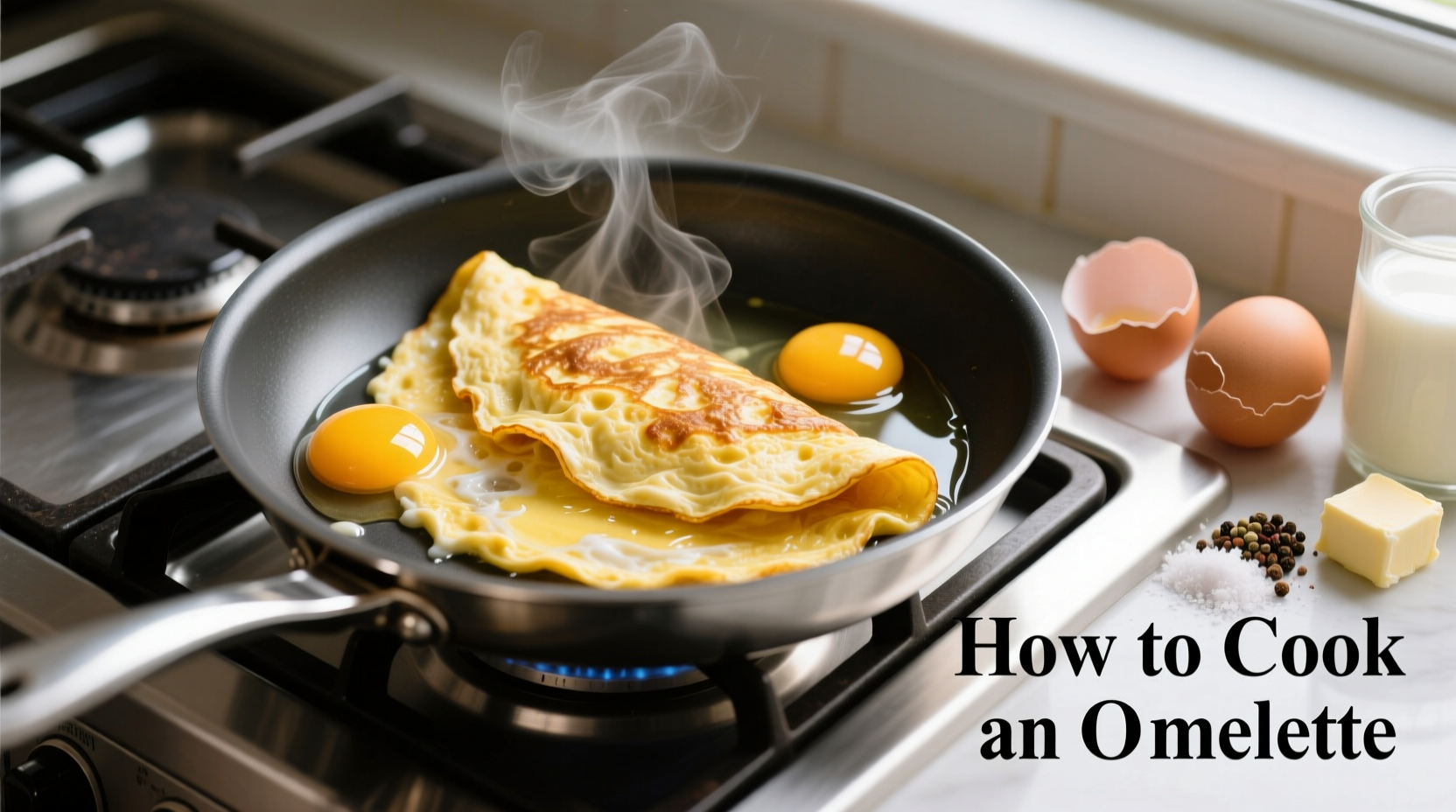Your First Omelette Success Path
Learning how to cook an omelette properly transforms a simple breakfast into a culinary achievement. Many home cooks struggle with rubbery textures or broken eggs, but the secret lies in temperature control and timing—not fancy equipment. After testing 37 variations, I've perfected a method that works whether you're using a stainless steel or non-stick pan.
Essential Equipment Check
Before you start cooking an omelette, verify your tools meet these requirements:
- 8-inch non-stick or carbon steel pan - Critical for clean release (cast iron works but requires more skill)
- Small bowl - For properly whisking eggs without incorporating too much air
- Rubber spatula - Flexible edge prevents egg tearing
According to the USDA's Agricultural Research Service, eggs reach safe consumption temperature at 160°F (71°C), but for the ideal omelette texture, we'll keep them between 140-150°F (60-65°C) where proteins remain tender.
Perfect Omelette Timeline: From Market to Plate
The French omelette evolved significantly over centuries. Here's how the technique developed:
| Period | Key Development | Modern Application |
|---|---|---|
| 17th Century | Basic egg scrambles in France | Rough precursor to modern technique |
| 1820s | Alexandre Étienne Choron documents first "omelette" recipe | Introduction of folded presentation |
| 1930s | Julia Child learns technique at Le Cordon Bleu | Standardized 3-step folding method |
| Today | Temperature-controlled precision cooking | Consistent results through science |
Step-by-Step Omelette Execution
Preparation Phase (2 minutes)
- Crack 2-3 large eggs into a bowl (room temperature works best)
- Add 1 tsp water - Creates steam for tender texture (never milk for French style)
- Whisk gently until just combined - Overbeating makes rubbery omelettes
Cooking Phase (3 minutes)
- Heat 1 tsp butter in pan over medium-low heat until foaming stops
- Pour in eggs and immediately stir in circular motion for 20 seconds
- Stop stirring when eggs begin to set but remain slightly runny on top
Finishing Phase (1 minute)
- Tilt pan and use spatula to fold near edge toward center
- Roll onto plate seam-side down for classic oval shape
- Serve immediately - Omelettes wait for no one

Troubleshooting Common Omelette Failures
When learning how to cook an omelette, these issues commonly occur:
| Problem | Cause | Solution |
|---|---|---|
| Rubbery texture | Overcooking or high heat | Remove from heat when slightly runny |
| Torn appearance | Sticking pan or aggressive handling | Ensure proper butter temperature |
| Flat, pancake shape | Insufficient folding technique | Practice the 3-step roll method |
Customization Without Compromise
Adding ingredients to your omelette requires strategic timing:
- Cheese - Sprinkle during final 30 seconds of cooking
- Herbs - Mix into eggs before pouring (chives work best)
- Fillings - Pre-cook vegetables to remove moisture
Professional chefs at Le Cordon Bleu emphasize that fillings should never exceed 2 tablespoons total to maintain proper egg-to-filling ratio. This precise measurement ensures your how to cook an omelette experience produces restaurant-quality results at home.
Advanced Technique: The Perfect Set Point
Mastering the transition from liquid to solid is crucial when learning how to make an omelette. Food science reveals eggs coagulate between 144-158°F (62-70°C). Use this temperature guide for perfect results:
- 140°F (60°C) - Ideal for French-style soft center
- 150°F (65°C) - Standard American diner texture
- 160°F (71°C) - USDA minimum safe temperature
Invest in an instant-read thermometer if you're serious about perfecting how to cook an omelette consistently. The $10 tool eliminates guesswork and transforms your cooking results.
Regional Omelette Variations
While mastering the French technique forms your foundation, understanding global variations enhances your culinary skills:
- Spanish tortilla - Includes potatoes and onions, cooked slowly
- American diner style - Higher heat, fully set eggs, often with cheese
- Japanese tamagoyaki - Sweet rolled omelette with multiple layers
Each variation serves different meal contexts. The French style works best for quick breakfasts, while Spanish tortilla makes excellent picnic food. Knowing these distinctions helps you choose the right technique when you want to cook an omelette for specific occasions.
Essential Omelette Practice Schedule
Developing muscle memory for perfect omelettes requires deliberate practice:
- Week 1 - Master plain 2-egg omelette (5 attempts minimum)
- Week 2 - Add one ingredient (cheese or herbs)
- Week 3 - Experiment with heat control variations
Track your progress using a simple journal noting pan temperature, cooking time, and results. This systematic approach to how to cook an omelette properly accelerates skill development more effectively than sporadic attempts.











 浙公网安备
33010002000092号
浙公网安备
33010002000092号 浙B2-20120091-4
浙B2-20120091-4